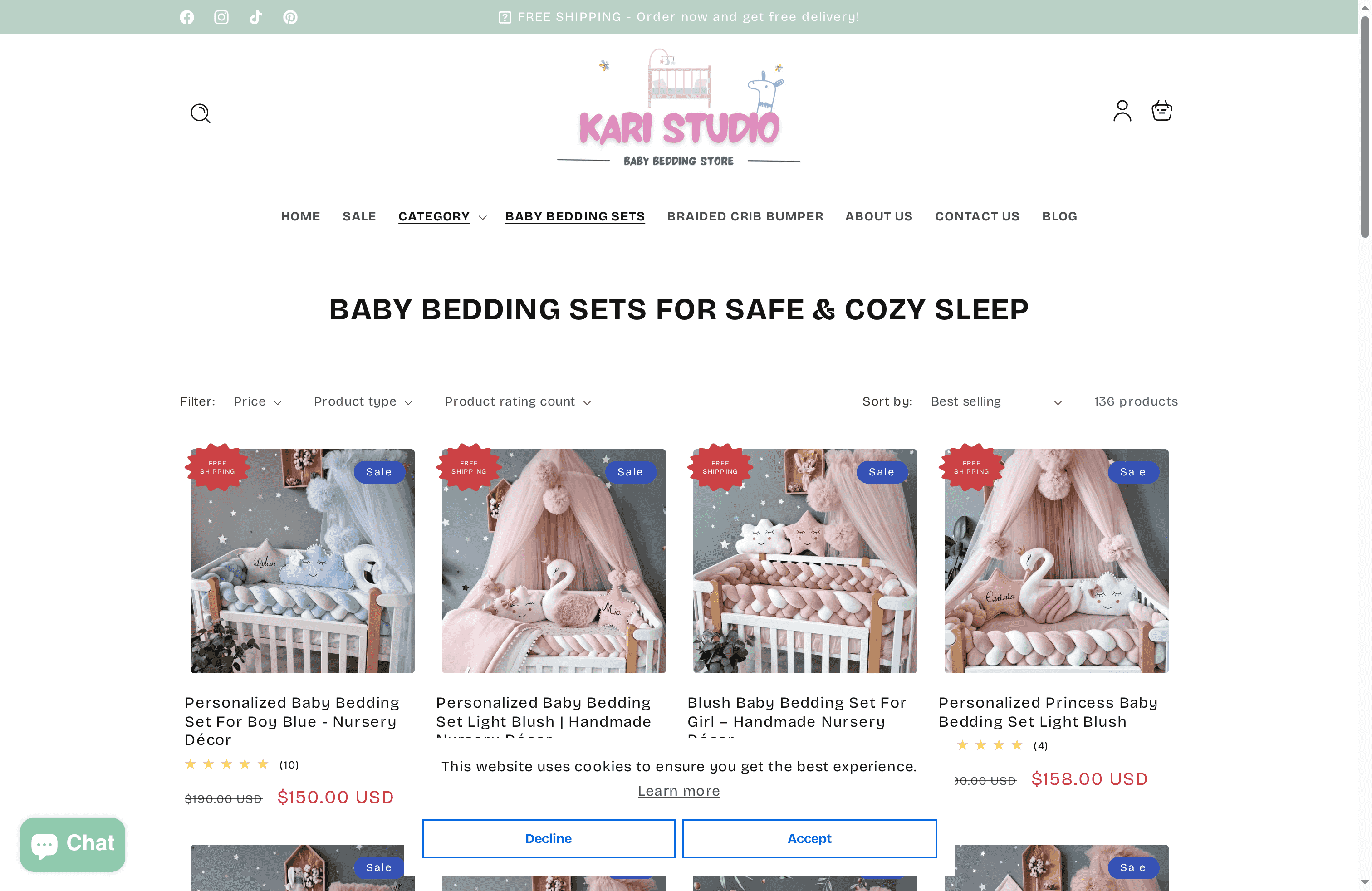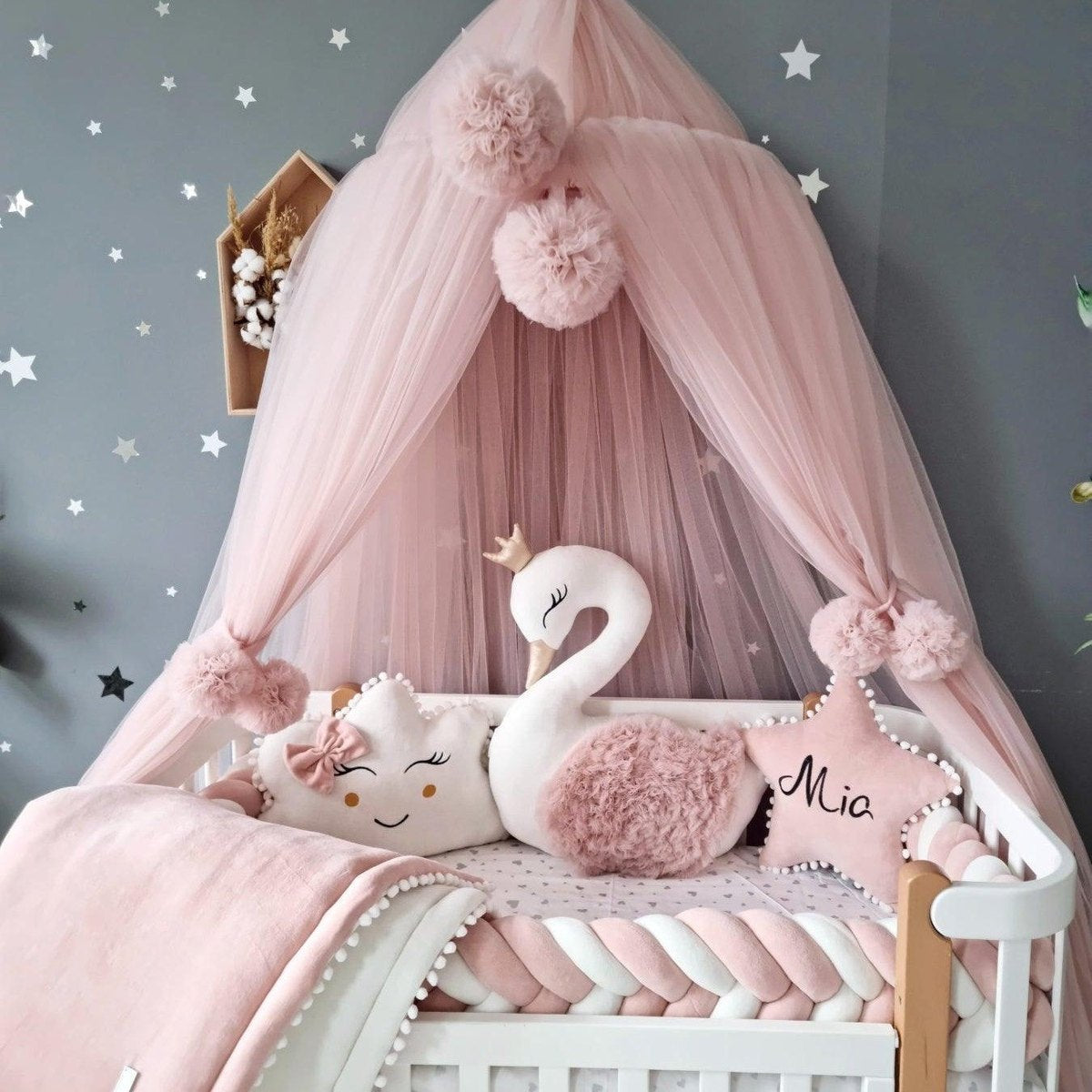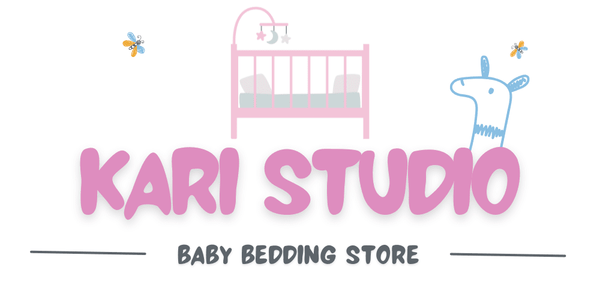Did you know that newborns can go through as many as 10 outfit changes a day? Keeping a nursery organized with all those tiny clothes and baby essentials can overwhelm even the most prepared parents. Simple storage strategies not only save time and space but also bring peace of mind to busy families. With smart solutions, you can create a calm, efficient nursery that keeps every must-have in easy reach.
Table of Contents
- 1. Start With Size Dividers For Tiny Baby Clothes
- 2. Use Hanging Organizers For Daily Essentials
- 3. Add Baskets For Blankets, Bedding And Soft Toys
- 4. Create A Simple Labeling System For Easy Access
- 5. Rotate And Store Outgrown And Seasonal Baby Clothes
- 6. Pack And Store Hospital Bag Leftovers Efficiently
- 7. Fold And Store Kari Studio Bedding Sets Neatly
Quick Summary
| Takeaway | Explanation |
|---|---|
| 1. Use Size Dividers for Baby Clothes | Organize clothing by size and age for easy access and selection. |
| 2. Implement Hanging Organizers for Essentials | Maximize vertical space to keep daily items accessible and organized. |
| 3. Utilize Baskets for Soft Items | Store blankets and toys in decorative baskets to reduce clutter and enhance aesthetics. |
| 4. Establish a Labeling System | Create clear labels for items to simplify retrieval for caregivers. |
| 5. Rotate and Store Outgrown Clothes | Regularly sort and store old clothing to keep your nursery organized and functional. |
1. Start With Size Dividers for Tiny Baby Clothes
Baby clothes are adorably tiny but can quickly become a cluttered organizational nightmare for new parents. Size dividers transform your nursery closet from chaos to a neatly arranged wardrobe that makes clothing selection effortless.
These simple organizational tools help you sort baby clothing by size and age ranging from newborn to 24 months. Visual organization becomes your secret weapon. By creating clear sections for each clothing size, you eliminate the frustrating guesswork of finding the right outfit.
When setting up your size dividers, consider these practical tips:
- Use color coded dividers for quick visual recognition
- Label each divider with precise age ranges (0-3 months, 3-6 months)
- Place larger sizes toward the back of the closet
- Rotate clothes as your baby grows
According to organizational experts, how to store baby bedding complements your size divider strategy by ensuring your entire nursery remains neat and functional. A well organized closet saves precious time during those early sleep deprived parenting moments.
Pro tip: Invest in durable plastic or wooden dividers that can withstand frequent handling and look adorable while keeping your baby’s wardrobe perfectly arranged.
2. Use Hanging Organizers for Daily Essentials
Nursery organization becomes dramatically simpler when you leverage the vertical space in your baby’s closet. Hanging organizers are your secret weapon for keeping daily essentials accessible and perfectly arranged.
Vertical storage maximizes limited nursery space while creating a streamlined system for all those tiny baby necessities. These versatile organizers transform cluttered spaces into efficient storage solutions that parents will absolutely love.
When selecting a hanging organizer, consider these strategic approaches:
- Choose clear pocket designs for easy visual identification
- Select organizers with multiple compartment sizes
- Install near changing stations for maximum convenience
- Look for washable materials that withstand frequent cleaning
Research suggests hanging organizers can store an impressive variety of baby items. As noted by experts, these systems work perfectly for storing:
- Diapers
- Bibs
- Socks
- Burp cloths
- Swaddles
- Sleep sacks
A guide on choosing crib bedding can complement your organizational strategy by helping you select coordinating storage solutions that look as good as they function.
Pro tip: Opt for sturdy hanging organizers with reinforced hooks that can handle the weight of multiple baby essentials without sagging or damaging your closet hardware.
3. Add Baskets for Blankets, Bedding and Soft Toys
Baskets are the unsung heroes of nursery organization that transform cluttered spaces into tidy sanctuaries. Woven storage solutions provide both functional storage and decorative charm for your baby’s closet and room.
These versatile containers offer an elegant way to corral soft items that do not easily hang or fold. Blankets, stuffed animals, and extra bedding can quickly become overwhelming without a smart storage strategy. Baskets create visual breathing room while keeping precious items accessible and neatly contained.
When selecting nursery storage baskets, consider these key factors:
- Choose breathable materials like cotton or natural fibers
- Select sizes that fit your specific closet shelving
- Look for washable designs that withstand baby wear and tear
- Prioritize neutral colors that blend with multiple decor styles
For parents seeking adorable yet practical options, animal themed fabric storage bins like the 3 Sprouts Storage Box can add playful personality to your organization system. These cute containers make storage feel less like a chore and more like a design choice.
If you want to elevate your nursery aesthetic, learn how to match crib accessories to create a cohesive look that includes your new storage baskets.
Pro tip: Rotate basket contents seasonally and wash fabric containers regularly to keep your nursery fresh and organized.
4. Create a Simple Labeling System for Easy Access
Navigating a baby’s closet can feel like solving a complex puzzle without the right organizational strategy. A well designed labeling system transforms chaos into clarity, making every item instantly findable for sleep deprived parents.
Labeling is more than just sticking tags on shelves. It creates a visual map of your nursery storage that helps everyone from parents to caregivers quickly locate exactly what they need. By implementing a consistent labeling approach, you streamline daily routines and reduce unnecessary searching.
Consider these practical labeling techniques:
- Use picture labels for non readers
- Select waterproof and durable label materials
- Create labels with clear large fonts
- Include both words and simple icons
- Choose contrasting colors for easy visibility
Technology can help make labeling easier. Portable label makers like the Brother P touch offer versatile options for creating professional looking labels in various colors and styles. For a more flexible approach, chalkboard labels allow you to update categories as your baby grows.
A step by step guide on storing baby bedding can complement your labeling strategy by providing additional organizational insights.
Pro tip: Laminate your labels or use clear protective sleeves to ensure they withstand frequent handling and potential baby drool or spills.
5. Rotate and Store Outgrown and Seasonal Baby Clothes
Baby clothes multiply faster than you can imagine and quickly overtake nursery storage spaces. Strategic seasonal rotation becomes your secret weapon for maintaining a streamlined wardrobe that grows with your little one.
Rotating and storing baby clothes is more than just an organizational task. It saves money by preserving clothing for future use and keeps your nursery closet functional and clutter free. As babies grow rapidly during their first year, having a smart system for managing clothing sizes and seasonal changes becomes essential.
Implement these practical clothing rotation strategies:
- Sort clothes by current size and upcoming sizes
- Create separate storage bins for each clothing stage
- Clean and inspect items before long term storage
- Use vacuum sealed bags for compact storage
- Label each container with size and season
For parents expecting future children or planning to save special items, categorize outgrown clothes meticulously. Divide storage containers by:
- Age range
- Gender
- Clothing type
- Seasonal appropriateness
Seasonal gift ideas for newborns can help you understand what clothing items work best for different times of year.
Pro tip: Store clothing in cool dry places and consider using moisture absorbing packets to prevent mildew and maintain fabric quality during long term storage.
6. Pack and Store Hospital Bag Leftovers Efficiently
After welcoming your newborn home, that hospital bag often becomes a jumbled mess of unused items and sentimental keepsakes. Transforming hospital bag remnants into an organized system helps you maximize valuable nursery storage and preserve precious memories.
Most parents return home with an assortment of unexpected items medical supplies, complimentary products and personal care items that do not quite fit into standard storage categories. Efficiently managing these leftovers prevents unnecessary clutter and creates a streamlined approach to post hospital organization.
Consider sorting hospital bag contents into these strategic categories:
- Medical supplies for home care
- Baby documentation and keepsakes
- Unused personal care items
- Complimentary hospital products
- Sentimental mementos
When organizing these items, prioritize:
- Storing medical supplies in easily accessible containers
- Protecting important documents in waterproof folders
- Creating a dedicated memory box for special keepsakes
- Donating unused personal care products
- Recycling packaging when possible
Parents looking to create a comprehensive nursery setup might find how to choose crib bedding helpful in complementing their organizational efforts.
Pro tip: Create a small memory container for hospital momentos and designate a specific drawer or shelf for post hospital supplies to maintain your nursery storage efficiency.
7. Fold and Store Kari Studio Bedding Sets Neatly
Premium baby bedding deserves premium care and storage. Proper folding and storage techniques preserve the quality and appearance of your Kari Studio bedding sets while maximizing nursery closet space.
Delicate fabrics require gentle handling and strategic folding to maintain their softness and prevent unnecessary wear. By implementing a systematic approach to storing your baby bedding, you protect your investment and ensure each piece remains fresh and ready for use.
Master these bedding storage techniques:
- Fold along natural seams and edges
- Avoid tight creasing that could damage fabric
- Store in breathable cotton bags or containers
- Keep away from direct sunlight
- Rotate bedding sets to prevent permanent folding marks
Specifically for Kari Studio bedding sets:
- Fold fitted sheets by tucking elastic edges inward
- Stack flat sheets and pillowcases neatly
- Use acid free tissue paper between delicate layers
- Consider rolling instead of folding for some items
Essential tips for choosing machine washable bedding can help you maintain your nursery textiles in top condition.
Pro tip: Always wash and completely dry bedding before long term storage to prevent potential mildew or fabric degradation.
Below is a comprehensive table summarizing the organizational strategies and tips for managing nursery storage effectively as discussed throughout the article.
| Main Topic | Implementation and Tips | Benefits/Outcomes |
|---|---|---|
| Size Dividers for Clothes | Use color-coded dividers, label with age ranges, place larger sizes in back, and rotate as baby grows. | Eliminates guesswork, saves time, and maintains a neat wardrobe. |
| Hanging Organizers | Select clear pockets, choose varying compartment sizes, install near changing stations, use washable materials. | Maximizes space, keeps essentials accessible, and streamlines storage. |
| Baskets for Soft Items | Choose breathable materials, match closet shelving sizes, select neutral colors, and wash regularly. | Provides functional storage with decorative charm, maintains accessibility. |
| Labeling System | Use picture labels, durable materials, clear fonts, and include icons. Technology like label makers can help. | Transforms chaos into clarity, improves navigation, reduces search time. |
| Rotating and Storing Clothes | Sort by size and season, use vacuum bags, label storage bins, store in cool dry places. | Preserves clothing for future use, maintains a functional closet, saves money. |
| Hospital Bag Storage | Categorize items, protect documents, create memory boxes, recycle when possible. | Reduces clutter, preserves memories, maximizes storage efficiency. |
| Storing Bedding Sets | Fold gently, use cotton bags, keep away from sunlight, rotate sets to avoid marks. | Preserves quality, maximizes closet space, keeps bedding fresh and ready for use. |
Transform Your Nursery Closet With Stylish and Practical Solutions
Keeping your nursery closet organized is essential for managing the flood of baby clothes and essentials that come with parenthood. The article reveals how size dividers, hanging organizers, and labeling systems can cut through the chaos and make daily routines smoother. If you want to elevate this organization while adding beauty and comfort to your baby’s space, explore our handcrafted nursery essentials designed with parents in mind.

Discover how our Handmade Baby Nests provide cozy organization for infant essentials while adding charm. Complement this with our Handmade Tents for Cribs and Baby Crib Canopies to create a serene and protected space for your little one. Finally, browse premium baby bedding sets crafted from hypoallergenic fabrics to keep your nursery both beautiful and practical. Start organizing with style today and turn clutter into calm by visiting Kari Studio now.
Frequently Asked Questions
How can I effectively use size dividers for baby clothes?
Utilize size dividers to organize your baby’s clothes by age ranges, such as 0-3 months or 3-6 months. Label each divider clearly and place larger sizes at the back of the closet to streamline outfit selection during hectic times.
What items can I store in hanging organizers in my nursery?
Hanging organizers can hold a variety of daily essentials, including diapers, bibs, socks, and burp cloths. Choose clear designs for easy visibility and install them near changing stations for added convenience.
How should I choose and arrange baskets for nursery storage?
Select breathable, washable baskets that fit your closet space and decor. Arrange them in a way that groups similar items together, such as blankets in one basket and soft toys in another, reducing clutter and creating a tidy look.
What labeling techniques work best for organizing a nursery closet?
Use waterproof labels with large fonts and contrasting colors for visibility and clarity. Incorporate both words and simple icons, especially for non-readers, to help caregivers easily find items in the closet.
How can I manage outgrown baby clothes effectively?
Sort outgrown baby clothes into separate bins for each size and season. Rotate these items regularly, labeling each container clearly to maintain a clutter-free closet while ensuring you easily access relevant clothing as your baby grows.
What’s the best way to store hospital bag leftovers?
Organize hospital bag leftovers into categories such as medical supplies, unused personal care items, and sentimental mementos. Use labeled containers to store these items efficiently, keeping frequently accessed items easy to reach while preserving special keepsakes.

